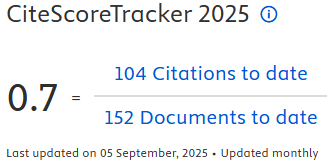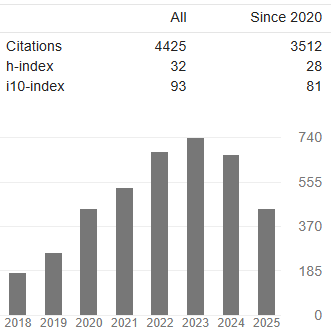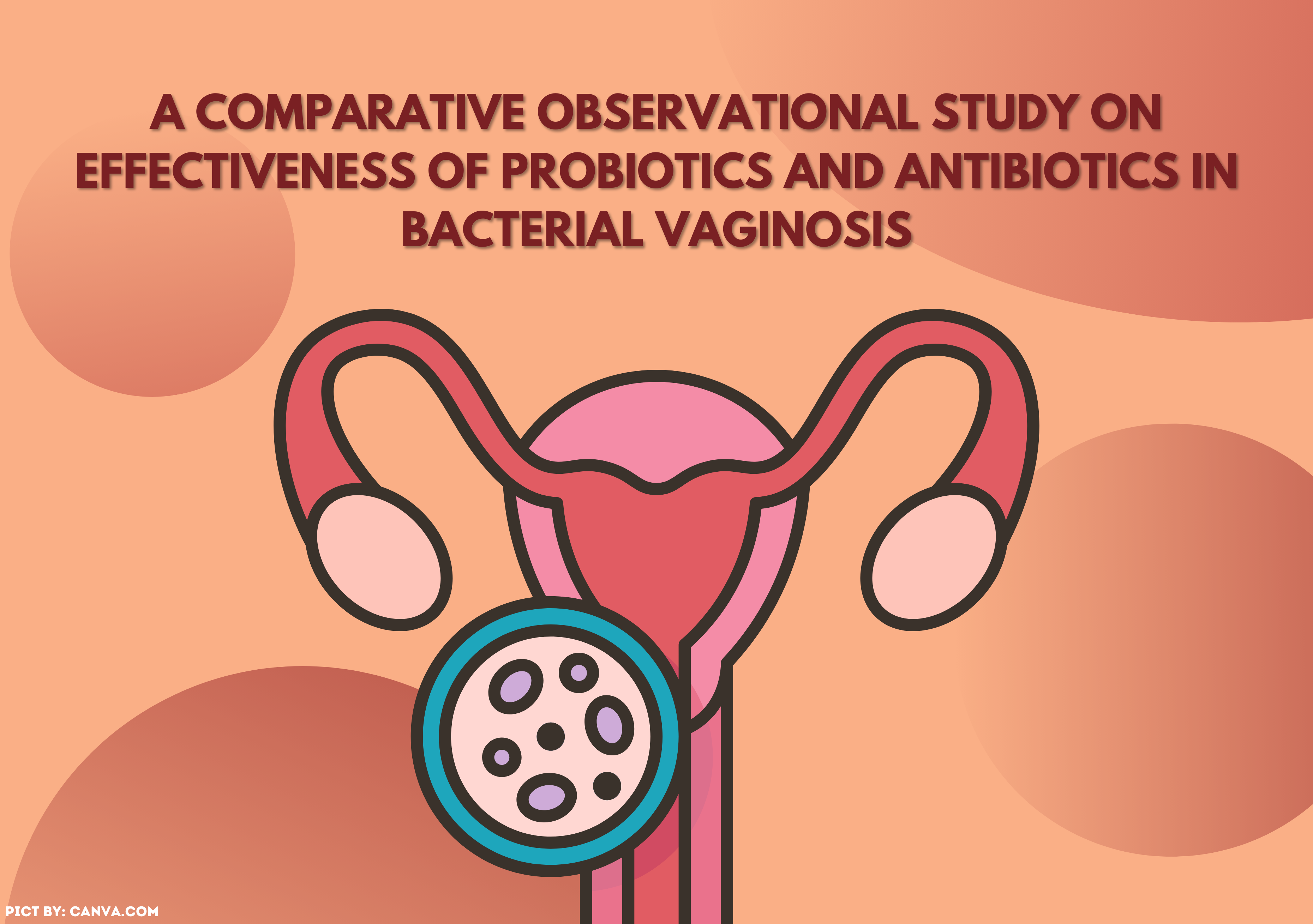HEALTH BELIEF APPLICATION MODEL: KNOWLEDGE AND PATTERNS OF IRON SOURCE FOOD CONSUMPTION AS A PREVENTIVE EFFORT FOR ANEMIA EVENTS
Downloads
ABSTRACT
Female adolescents are prone to iron deficiency anemia due to regular menstrual cycles and loss of basal, thus requiring sufficient iron intake from food consumed daily. The concept of the Health Belief Model which consists of perceived susceptibility, perceived severity, perceived benefit, perceived barrier, and self efficacy helps to take action on the prevention of anemia. This study aimed to analyze the correlation of knowledge, the Health Belief Model, and consumption patterns with anemic status at Saint Stanislaus High School. This study used a cross-sectional design. The population in this study were all female students in grade X and XI of Saint Stanislaus Senior High School, totaling 84 people. The cluster random sampling technique was used to calculate the total amount of samples, totaling 46 people as the sample of this study. The data collected included respondent characteristics, knowledge rate, construction of Health Belief Model, consumption patterns of iron source foods differentiated into levels of adequacy and frequency of eating, and anemia status. The results of this study showed that 14 of the respondents aged 16 years experienced anemia (30.43%). The correlation of knowledge and the incidence of anemia significantly correlated, with a p-value of 0.044 (p <0.005). Meanwhile, constructs of the Health Belief Model and the level of adequacy of food consumption of iron sources had no correlation with the incidence of anemia (p> 0.005). The frequency of kale consumption as a source of non heme iron had a correlation with the incidence of anemia (p <0.005). This study concluded that there was a correlation with knowledge and the incidence of anemia in Saint Stanislaus High School students. Proper nutrition education based on the concept of the Health Belief Model can be given to students to let them have an understanding, good attitude, and practice prevention measures for anemia well.
Keywords: knowledge, Health Belief Model, iron consumption pattern, anemic
Almatsier, S. (2010) Ilmu Gizi Dasar. Jakarta: PT Gramedia Pusaka. doi: 10.26911/thejhpb.2016.01.03.03.
Arisman, M. B. (2010) Gizi dalam Daur Kehidupan : Buku Ajar Ilmu Gizi. Jakarta: EGC.
Bakta, I. M. (2006) Pendekatan terhadap pasien Anemia Buku Ajar Penyakit Dalam IV. Jakarta: Pusat Penerbitan Ilmu Penyakit Dalam FK UI.
Bakta, I. M. (2007) Hematologi Klinis Ringkas. Jakarta: ECG.
Brooker, C. (2001) Kamus Saku Keperawatan. Jakarta: EGC.
Candra, A. (2018) "Faktor-faktor yang Memengaruhi Hasil Suplementasi Besi pada Ibu Hamil,” Journal of Nutrition and Health, 6(2), hal. 65–73.
Caturiyantiningtiyas, T. (2015) Hubungan Antara Pengetahuan, Sikap dan Perilaku dengan Kejadian Anemia Remaja utri X dan XI SMA Negeri 1 Polokarto. Universitas Muhammadiyah Surakarta. doi: 10.2752/174967810X12657245205260.
Contento, R. I. (2011) Nutrition Education : Linking Research, Theory and Practice 2nd Edition. Kanada: Jones and Bartlett Publishers.
Dumilah, R. A. P. dan Sumarmi, S. (2017) "Hubungan kejadian Anemia dengan Prestasi Belajar Siswi di SMP Unggulan Bina Insani,” Amerta Nutrition, 1(4), hal. 331–340. doi: 10.20473/amnt.v1.i4.2017.331-340.
Fitrah, E., Hadju, V. dan Citrakesumasari (2011) "Pola Konsumsi dan Status Hb Remaja Putri (SMP) di Daerah Endemik Malaria Kecamatan Baras Kabupaten Mamju Utara Sulawesi Barat,” Jurnal MKMI, 7(1), hal. 61–68.
Ghaderi, N. et al. (2017) "Effect of Education Based on the Health Belief Model (HBM) on Anemia Preventive Behaviors among Iranian Girl Students,” International Journal of Pediaetrics, 5(42), hal. 5043–5052. doi: 10.22038/ijp.2017.22051.1844.
Herta, M., Yuli, L. dan Yuliana, D. P. (2013) "Pola Konsumsi (Faktor Inhibitor Dan Enhancer Fe) Terhadap Status Anemia Remaja Putri,” Jurnal Kesehatan Masyarakat, 8(2), hal. 113–120. doi: 10.15294/kemas.v11i1.3516.
Huffman, L. S. et al. (2001) Essential Health Sector Actions to Improve Maternal Nutrition in Africa. Washington DC: The Linkages Project Academy for Educational Development.
Indonesian Ministry of Health (2013) "Riset Kesehatan Dasar,” Jakarta: Badan Penelitian dan Pengembangan Kesehatan Departemen Kesehatan Republik Indonesia. doi: 10.1007/s13398-014-0173-7.2.
Khomsan, A. (2003) Pangan dan Gizi untuk Kesehatan. Jakarta: PT. Raja Grafindo Persada.
Kristianti, S. dan Wibowo, T. A. (2013) "Hubungan Anemia dengan Siklus Menstruasi pada Remaja Putri di SMA Negeri 1 Imogiri, Bantul, Yogyakarta,” Jurnal Studi Pemuda, 3(1), hal. 33–38.
Kurniawati, C. dan Sulistyowati, M. (2014) "Aplikasi Teori Health Belief Model dalam Pencegahan Keputihan Patologis,” Jurnal Promosi kesehatan, Vol. 2(No. 2), hal. 117–127.
Listiana, A. (2016) "Analisis Faktor-Faktor yang Berhubungan Dengan Kejadian Anemia Gizi Besi pada Remaja Putri di SMKN 1 Terbanggi Besar Lampung Tengah,” Jurnal Kesehatan, 7(3), hal. 455–469. doi: 10.26630/jk.v7i3.230.
Matayane, S. G., Bolang, A. S. L. dan Kawengian, shirley E. S. (2014) "Hubungan Antara Asupan Protein dan Zat Besi dengan Kadar Hemoglobin Mahasiswa Program Studi Pendidikan Dokter Angkatan 2013 Fakultas Kedokteran Universitas Sam Ratulangi,” Jurnal e-Biomedik (eBm), 2(3).
Muchlisa, Citrakesumasari dan Indriasari, R. (2013) "Hubungan Asupan Zat Gizi dengan Status Gizi pada Remaja Putri di Fakultas Kesehatan Masyarakat Universitas Hasanuddin Makassar Tahun 2013,” Jurnal MKMI, hal. 1–15.
Mularsih, S. (2017) "Hubungan Pengetahuan Remaja Putri tentang Anemia dengan Perilaku Pencegahan Anemia pada saat Menstruasi di SMK Nusa Bhakti Kota Semarang,” Jurnal Kebidanan, 6(2), hal. 80–85.
Notoatmodjo, S. (2012) Promosi Kesehatan : Teori dan Aplikasi. Jakarta: Rineka Cipta.
Onoruoiza, S. I. et al. (2015) "Using Health Belief Model as an Intervention to Non Compliance with Hypertension Information among Hypertensive Patient. International Organization of Scientific Research,” Journal of Humanities and Social Science, 20(9), hal. 11–16. doi: 10.9790/0837-20951116.
Shahrabani, S. dan Benzion, U. (2012) "How Experience Shapes Health Beliefs: The Case of Influenza Vaccination,” Health Education and Behavior, 39(5), hal. 612–619. doi: 10.1177/1090198111427411.
Suria, N. R. (2017) Hubungan antara Pengetahuan tentang Anemia, Tingkat Konsumsi Protein, Zat Besi dan Vitamin C dengan Kadar Hemoglobin pada Siswa Sekolah Menengah Atas di SMAN 3 Ponorogo. Universitas Muhammadiyah Surakarta.
Suryani, D., Hafiani, R. dan Junita, R. (2015) "Analisis Pola Makan dan ANemia Gizi Besi pada Remaja Putri Kota Bengkulu,” Jurnal Kesehatan Masyarakat Andalas, 10(1), hal. 11–18. doi: 10.24893/jkma.10.1.11-18.2015.
Syatriani, S. dan Aryani, A. (2010) "Konsumsi Makanan dan Kejadian Anemia pada Siswi Salah Satu SMP di Kota Makassar,” Jurnal Kesehatan Masyarakat Nasional, 4(6), hal. 251–254. doi: 10.21109/kesmas.v4i6.163.
- The authors agree to transfer the transfer copyright of the article to The Indonesian Journal of Public Health effective if and when the paper is accepted for publication.
- Authors and other parties are bound to the Creative Commons Attribution-NonCommercial-ShareAlike 4.0 International License for the published articles, legal formal aspect of journal publication accessibility refers to Creative Commons Attribution-NonCommercial-ShareAlike 4.0 International License (CC BY-NC-SA), implies that:
- Attribution ” You must give appropriate credit, provide a link to the license, and indicate if changes were made. You may do so in any reasonable manner, but not in any way that suggests the licensor endorses you or your use.
- NonCommercial ” You may not use the material for commercial purposes.
- ShareAlike ” If you remix, transform, or build upon the material, you must distribute your contributions under the same license as the original.































